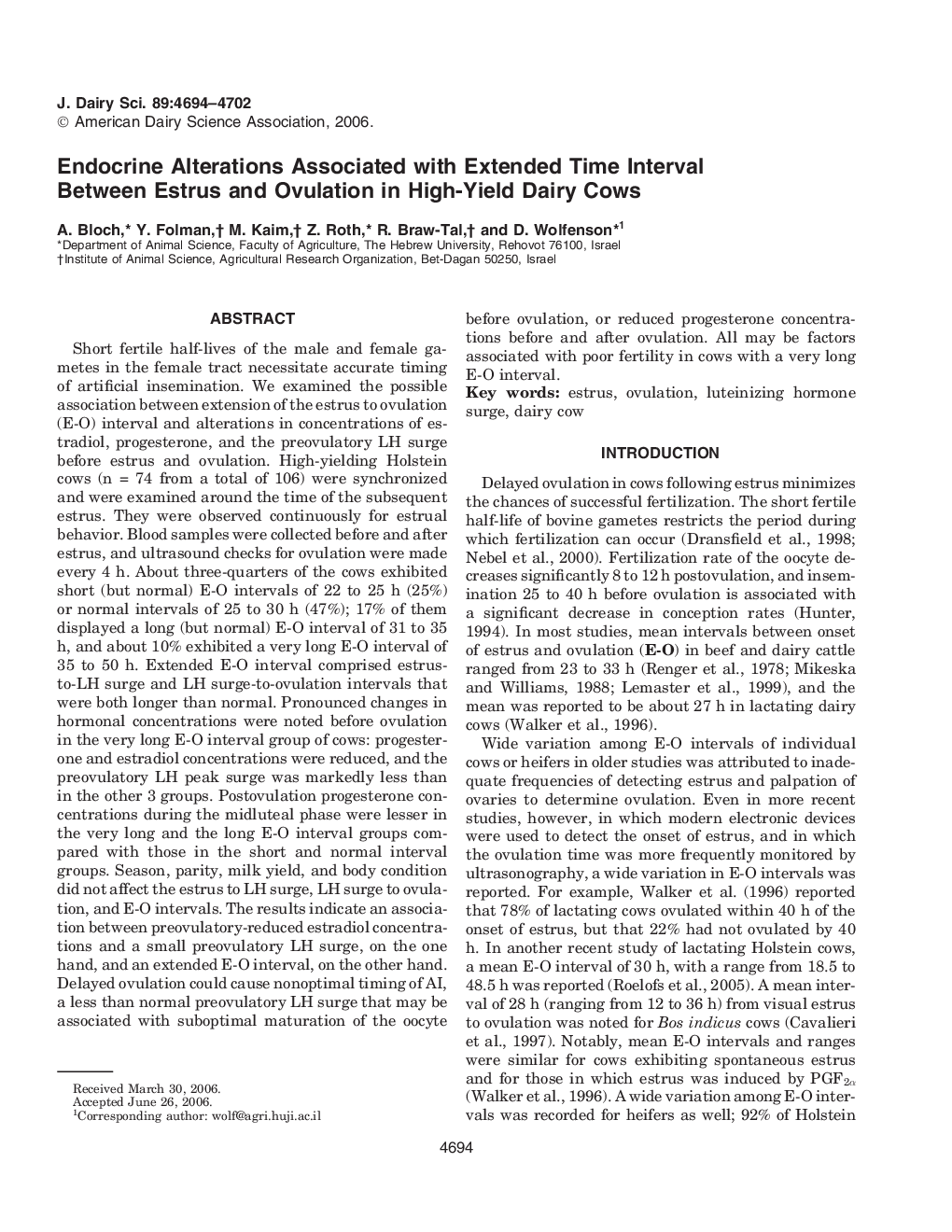| Article ID | Journal | Published Year | Pages | File Type |
|---|---|---|---|---|
| 2440851 | Journal of Dairy Science | 2006 | 9 Pages |
Abstract
Short fertile half-lives of the male and female gametes in the female tract necessitate accurate timing of artificial insemination. We examined the possible association between extension of the estrus to ovulation (E-O) interval and alterations in concentrations of estradiol, progesterone, and the preovulatory LH surge before estrus and ovulation. High-yielding Holstein cows (n = 74 from a total of 106) were synchronized and were examined around the time of the subsequent estrus. They were observed continuously for estrual behavior. Blood samples were collected before and after estrus, and ultrasound checks for ovulation were made every 4Â h. About three-quarters of the cows exhibited short (but normal) E-O intervals of 22 to 25Â h (25%) or normal intervals of 25 to 30Â h (47%); 17% of them displayed a long (but normal) E-O interval of 31 to 35Â h, and about 10% exhibited a very long E-O interval of 35 to 50Â h. Extended E-O interval comprised estrus-to-LH surge and LH surge-to-ovulation intervals that were both longer than normal. Pronounced changes in hormonal concentrations were noted before ovulation in the very long E-O interval group of cows: progesterone and estradiol concentrations were reduced, and the preovulatory LH peak surge was markedly less than in the other 3 groups. Postovulation progesterone concentrations during the midluteal phase were lesser in the very long and the long E-O interval groups compared with those in the short and normal interval groups. Season, parity, milk yield, and body condition did not affect the estrus to LH surge, LH surge to ovulation, and E-O intervals. The results indicate an association between preovulatory-reduced estradiol concentrations and a small preovulatory LH surge, on the one hand, and an extended E-O interval, on the other hand. Delayed ovulation could cause nonoptimal timing of AI, a less than normal preovulatory LH surge that may be associated with suboptimal maturation of the oocyte before ovulation, or reduced progesterone concentrations before and after ovulation. All may be factors associated with poor fertility in cows with a very long E-O interval.
Related Topics
Life Sciences
Agricultural and Biological Sciences
Animal Science and Zoology
Authors
A. Bloch, Y. Folman, M. Kaim, Z. Roth, R. Braw-Tal, D. Wolfenson,
